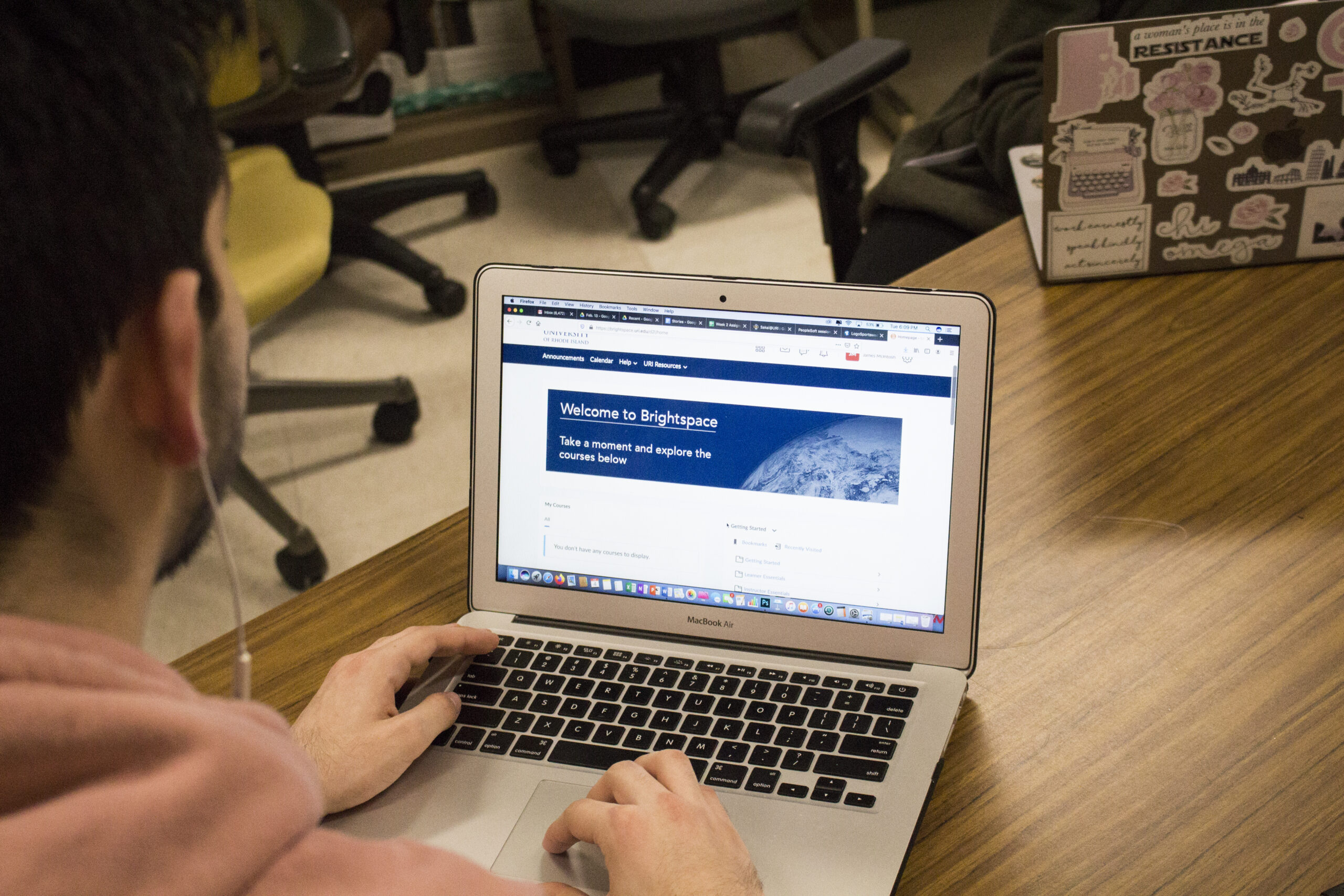This semester, some URI students are getting their first look at Brightspace, which will replace Sakai in full in the Fall of 2020. Photo by James McIntosh.
The University of Rhode Island began rolling out the Brightspace learning management system (LMS) this semester, giving the University its first look at Sakai’s replacement in action.
URI started researching changing from its current LMS Sakai in July 2018 and signed the contract to move to Brightspace in July 2019. Brightspace is currently being used in 65 courses. Brightspace will be used in every on-campus course at the start of the fall 2020 semester.
Kathleen Torrens, a communication studies professor, led the LMS Evaluation which looked into different LMS systems to replace Sakai as chair of the LMS task force. Torrens is now leading the Brightspace Implementation Team.
“A learning management system is like a platform,” Torrens said. “On the platform rests all of the capabilities for delivering instructional technology. So we can build core sites or courses on the platform and it facilitates the delivery of information to audiences. It can be a really powerful tool in the service of higher education and Brightspace is pretty cool.”
The move to Brightspace will require faculty to move their materials from Sakai to Brightspace. Moving that information has been challenging because Sakai does not transfer information in a way that other LMS systems can use, so information has to be entered manually.
URI has used Sakai for 10 years and Sakai is a part of daily life for students and faculty alike, but this change has been generally well-liked, according to Torrens. LMS are common in education now, though other universities use different systems.
“We got to the point where we realized that the company that was hosting our instance of Sakai was the only company that hosts it,” Torrens said. “[That] is a precarious position, so we said, ‘let’s start looking around.’ We asked everybody on campus, how do you like Sakai and how would you feel if we looked at something different? All the results that we got indicated that people would be more than happy to consider something new.”
The courses using Brightspace are from many different departments and are a mix of online, blended and in-person curriculums. Some professors have experienced difficulties with transferring their information and acclimating to a new LMS, but most faculty have had positive experiences, according to Torrens.
Torrens said Brightspace’s interface is much more inviting and offers many features that can help students and faculty do work. The features of Brightspace include offline grading for professors, access on phones and the integration of third-party tools such as Top Hat.
Matt Mauriello, a freshman who is in one of the Brightspace courses, said that the change has not really affected his work.
“The only thing I’ve noticed is that Brightspace is a little more disorganized,” Mauriello said. “The first time I used it was this semester and it [worked] okay. I like Sakai a little more, but I don’t hate Brightspace.”
Currently, Torrens and the Brightspace Implementation Team are offering training to faculty on how to use Brightspace. There is a basic course and an online pedagogy course, where faculty can learn the best practices for online teaching. The team hopes to roll out a Brightspace site design course within the next as well, according to Torrens. Meanwhile, students can go to the Brightspace YouTube page, where there are tutorials on how to use the system.

